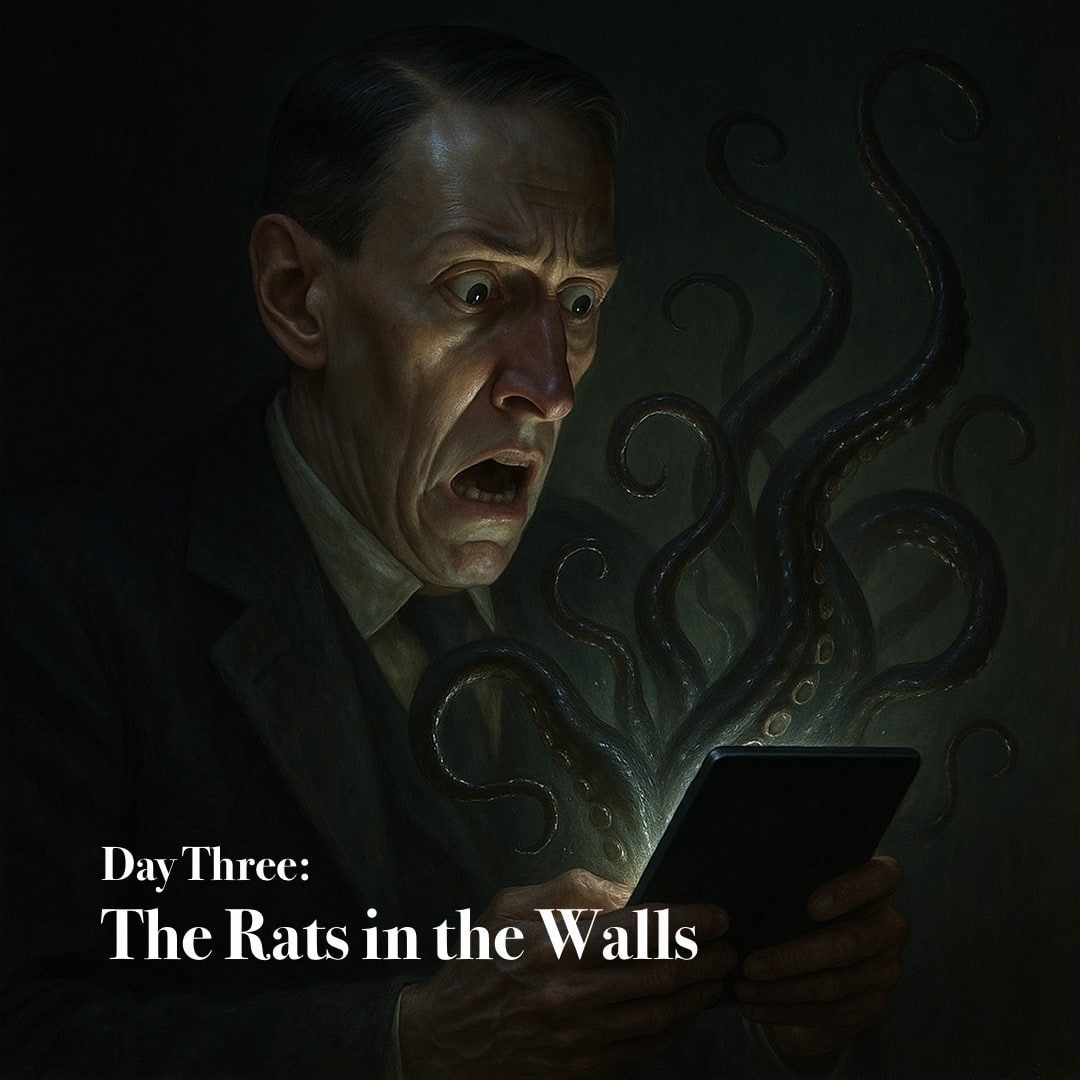The Rats in the Walls


“The Rats in the Walls” has ever been my most cherished of Lovecraft’s dread imaginings, though it may seem strange that I, enamored as I am of cosmic horror and gulfs beyond time, should favor a tale rooted in ancestral horror and subterranean decay. Permit me, then, to recount.
In the shadow-haunted days of my youth in South Bend, Indiana, I haunted the venerable Griffon Bookstore. On the shelves I first beheld The Best of H. P. Lovecraft, its’ cover beautifully painted by Michael Whelan. Though I had never yet pierced the veil of his prose, his presence already festered everywhere, upon the mouldering pages of Swamp Thing, within the role-playing game of The Call of Cthulhu. With wages earned in grease and weariness as a busboy, I at last secured the tome.
Late that night, I opened its pages and descended with Delapore into Exham Priory, where phantom rats whispered behind worm-eaten walls. As I read, my own chamber betrayed the same uncanny stirrings, as if unseen vermin crept through the plaster about me. Shuddering, I cast the book aside unfinished. Months later, in Boston, the volume re-emerged from my boxes, and once more I dared the tale. Again came the sound of gnawing in the walls, yet this time I steeled my nerves and endured to the final abomination.
What I beheld therein chills me still: the last De la Poer, haunted by phantom scurryings of rodents, uncovering the monstrous history of his line: a subterranean city of human cattle, bred and devoured until madness claimed both kin and heir. His frenzy, his cannibal feast upon poor Norrys, his gibbering in tongues dead and unholy, all culminating in confinement and delusion, while the gnawing persisted beyond reason.
Author, editor and critic, Lin Carter has deemed it among Lovecraft’s finest; Lovecratian scholar S. T. Joshi hails its perfection of form and dread. I take comfort in such recognition, though I doubt they knew the terror of reading while the same spectral scratching echoed through their very walls. For me, the tale will ever remain not merely literature, but lived experience, a nightmarish communion with the vermin of eternity.